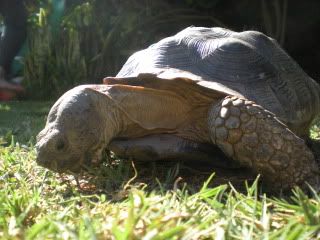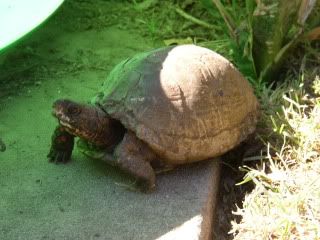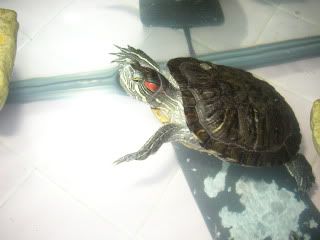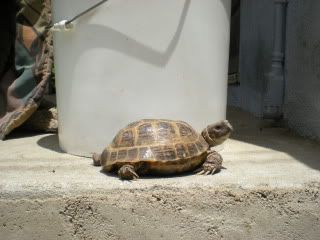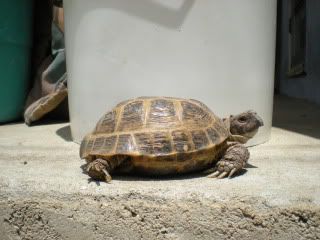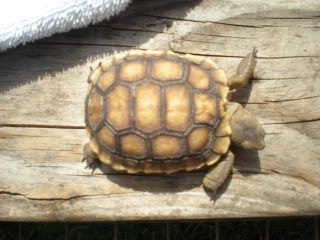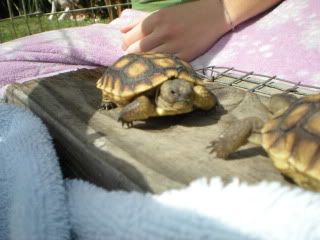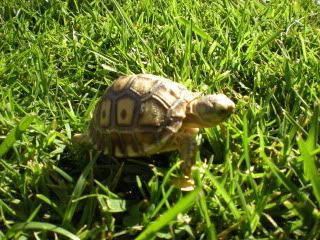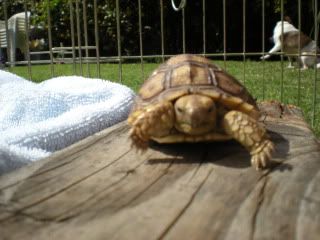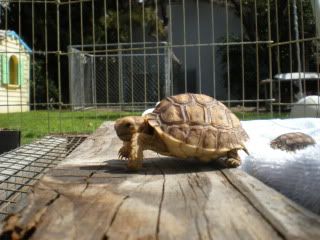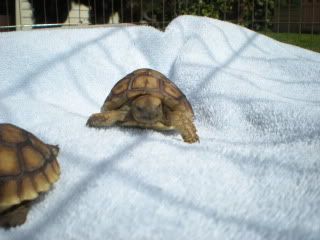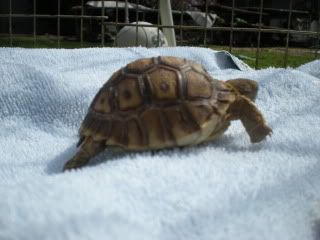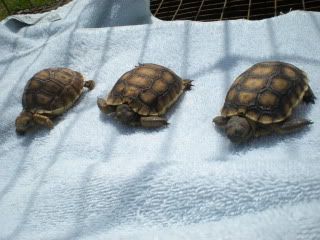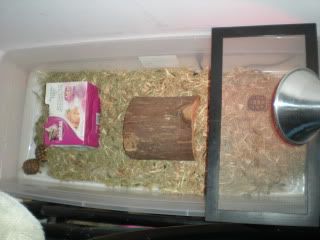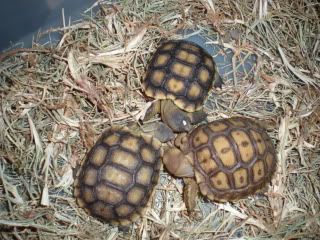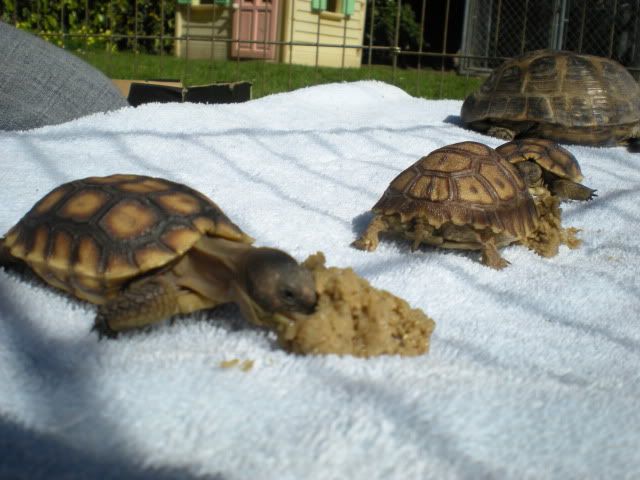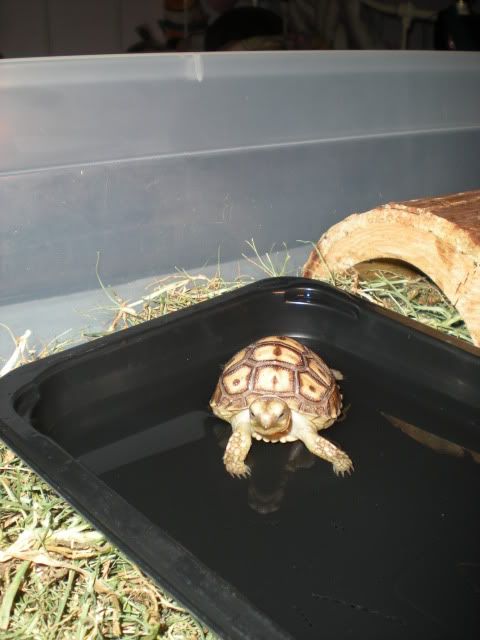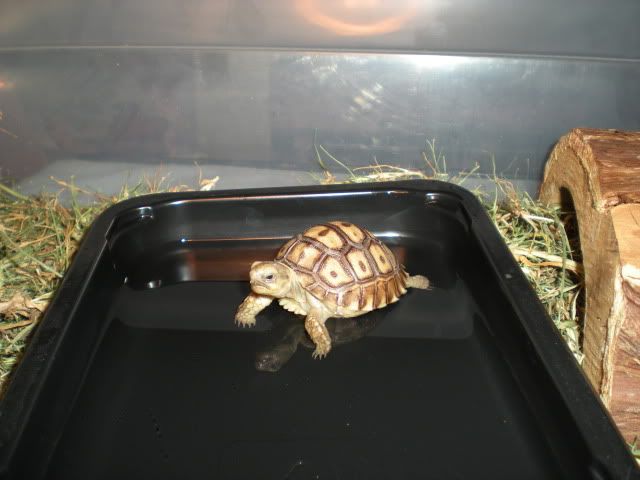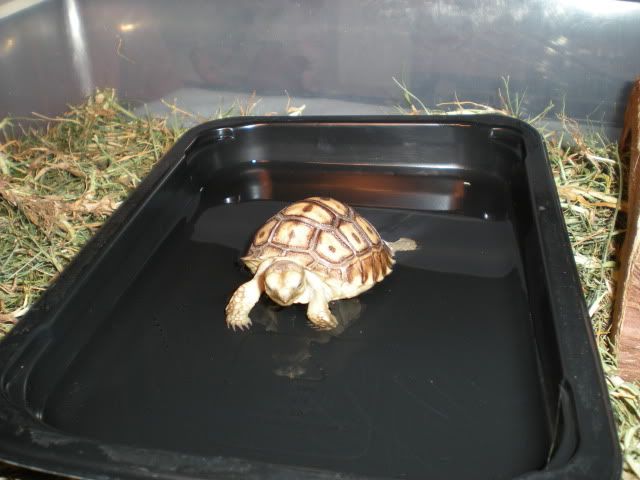I am new to these forums, but just had one quick question.
I rescued a Sulcata hatchling (who I named Sherman) in March 2009 when he/she was 2 months old. This January Sherman turned 1 year old, but I am concerned with his/her size, as he/she is still very small.
More about Sherman.....
He lives in an indoor, long tuberware container with heating/lighting on one side of the container, allowing the other side to be cooler for him/her. There are 2 hiding places, and he shares his home with 2 CA Desert Tortoise hatchlings (who actually really perked him up when we got them).
They get "soaked" regularly, and when it is warm/sunny outside, all three of them (Sherman and the 2 Desert hatchlings) go out in their outdoor enclosure which provides grass, natural sunlight for proper shell grow, and shady areas. They also have pieces of cuddle bone available in their indoor container. We live in Southern California, so the weather permits them to go outdoors often.
I was scanning previous threads and found a good suggestion to measure tortoises over time-- tracing around them on paper, so will start doing that; however, I really do not think he has gotten much longer or wider since I have had him. His shell seems to be growing just a little, but I was told Sulcata hatchlings grow very quickly, so am a little concerned.
When I got him, he was 1 3/4 inches long and 1 1/2 inches wide. He is now 2 inches long and still about 1 1/2 inches wide... not much bigger at all.
Suggestions and/or adivice are greatly appreciated!
(Along with Sherman and the 2 CA Desert Tortoise hatchlings-- who are about 3 months old-- we have an adult CA Desert Tortoise, adult Russian Tortoise, adult Box Turtle, and 4 Red Eared Sliders... all rescues. I will hopefully be rescuing another turtle this week. The shelter says he/she is a Mud Turtle, but I am not 100% sure what he is yet.)
Thanks!
I rescued a Sulcata hatchling (who I named Sherman) in March 2009 when he/she was 2 months old. This January Sherman turned 1 year old, but I am concerned with his/her size, as he/she is still very small.
More about Sherman.....
He lives in an indoor, long tuberware container with heating/lighting on one side of the container, allowing the other side to be cooler for him/her. There are 2 hiding places, and he shares his home with 2 CA Desert Tortoise hatchlings (who actually really perked him up when we got them).
They get "soaked" regularly, and when it is warm/sunny outside, all three of them (Sherman and the 2 Desert hatchlings) go out in their outdoor enclosure which provides grass, natural sunlight for proper shell grow, and shady areas. They also have pieces of cuddle bone available in their indoor container. We live in Southern California, so the weather permits them to go outdoors often.
I was scanning previous threads and found a good suggestion to measure tortoises over time-- tracing around them on paper, so will start doing that; however, I really do not think he has gotten much longer or wider since I have had him. His shell seems to be growing just a little, but I was told Sulcata hatchlings grow very quickly, so am a little concerned.
When I got him, he was 1 3/4 inches long and 1 1/2 inches wide. He is now 2 inches long and still about 1 1/2 inches wide... not much bigger at all.
Suggestions and/or adivice are greatly appreciated!
(Along with Sherman and the 2 CA Desert Tortoise hatchlings-- who are about 3 months old-- we have an adult CA Desert Tortoise, adult Russian Tortoise, adult Box Turtle, and 4 Red Eared Sliders... all rescues. I will hopefully be rescuing another turtle this week. The shelter says he/she is a Mud Turtle, but I am not 100% sure what he is yet.)
Thanks!


